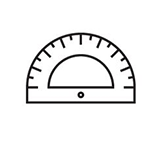마멘치사우르스(Mamenchisaurus)
| 국내/해외배송 | |
|---|---|
| 배송비 방법 | 택배 |
| 배송비 | 4,000원 (50,000원 이상 구매 시 무료) |
| 수량 |
|
| 상품 정보 | 가격 | 삭제 |
|---|---|---|
| [총 상품금액(수량)] 0 (0개) | ||
- 학명 Scientific Name : Mamenchisaurus hochuanensis
- 형태 Mode : 골격화석 Skeleton
- 시대 Age : 후기쥐라기 Late Jurassic
- 크기 L×W×H (m) : 22m×3m×6m
- 원산지 Location : 중국 사천 Sichuan
MAMENCHISAURUS("Mamenxi (Ferry) lizard")
ANATOMY
Mamenchisaurus was a long-necked, long-tailed, quadrupedal, plant-eating dinosaur. Mamenchisaurus had the longest neck of any known dinosaur, except the newly found Sauroposeidon. Mamenchisaurus' neck was about 46 feet (14 m). It had 19 vertebrae in its neck, more than any other known dinosaur had. Mamenchisaurus was about 70 to 80 feet (21 to 25 m) long and weighed roughly 12 tons (11 tonnes).
Its hind legs were longer than the front legs; these hind legs were similar to the legs of Diplodocus. Its skull however, was box-shaped (unlike Diplodocus' elongated snout).
WHY WAS MAMENCHISAURUS' NECK SO LONG?
Mamenchisaurus held its neck more-or-less horizontally (parallel to the ground). The long neck may have been used to poke into forests to get foliage that was otherwise unavailable to the huge, lumbering varieties of sauropods who could not venture into forests because of their size. Alternatively, the long neck may have enabled this sauropod to eat soft pteridophytes (horsetails, club mosses, and ferns). These soft-leaved plants live in wet areas, where sauropods couldn't venture, but perhaps the sauropod could stand on firm ground and browse in wetlands.
DIET
Mamenchisaurus was an herbivore (it ate only plants). It must have eaten a tremendous amount of plant material each day to sustain itself. It swallowed leaves whole, without chewing them, and may have had gastroliths (stomach stones) in its stomach to help digest this tough plant material. It had blunt teeth, useful for stripping foliage.
Its main food was probably conifers, which were the dominant plant when the large sauropods lived. Secondary food sources may have included Gingkos, seed ferns, cycads, bennettitaleans, ferns, club mosses, and horsetails.
BEHAVIOR
Mamenchisaurus may have travelled in herds and possibly migrated when they depleted their local food supply. Mamenchisaurus may have hatched from eggs, like other sauropods. Sauropod eggs have been found in a linear pattern and not in nests; presumably the eggs were laid as the animal was walking. It is thought that sauropods did not take care of their eggs. Sauropods life spans may have been in the order of 100 years.
INTELLIGENCE
It used to be thought that the sauropods (like Mamenchisaurus, Brachiosaurus and Apatosaurus) and Stegosaurus had a second brain. Paleontologists now think that what they thought was a second brain was just an enlargement in the spinal cord in the hip area. This enlargement was larger than the animal's tiny brain.
Mamenchisaurus was a sauropod, whose intelligence (as measured by its relative brain to body weight, or EQ) was the among the lowest of the dinosaurs.
LOCOMOTION
Mamenchisaurus moved slowly on four legs (as determined from fossilized tracks and its leg length and estimated mass).
WHEN MAMENCHISAURUS LIVED
Mamenchisaurus lived during the late Jurassic Period, from about 156 million to 145 million years ago. The late Jurassic was a period when the Earth was very warm, the sea level were high, and there was no polar ice. This was also the time when the enormous sauropods (long-necked dinosaurs) roamed the Earth; these giants included Camarasaurus, Apatosaurus, Diplodocus, and Brachiosaurus. Also present were Stegosaurus, Tuojiangosaurus, Allosaurus, Supersaurus, Coelurosaur, and many other dinosaurs.
FOSSILS
Mamenchisaurus was named by Chung Chien Young, a Chinese paleontologist, in 1954. Fossils have been found in
CLASSIFICATION
Mamenchisaurus belonged to the:
Kingdom Animalia (animals)
Phylum Chordata (having a hollow nerve chord ending in a brain)
Class Archosauria (diapsids with socket-set teeth, etc.)
Order Saurischia - lizard-hipped dinosaurs
Suborder Sauropoda - large quadrupedal herbivores that have a long tail and a small head
Family Diplodocidae or Camarasauridae (the legs and feet are similar to those of Diplodocids but the skull is more like a Camarasaurid)
Genus Mamenchisaurus
Species: The type species is M. constructus. Other Mamenchisaurus species include M. changshouensis, M. hochuanensis, and M. jingyangensis, M. sinocanadorum.

















 확대보기 및 상세정보
확대보기 및 상세정보